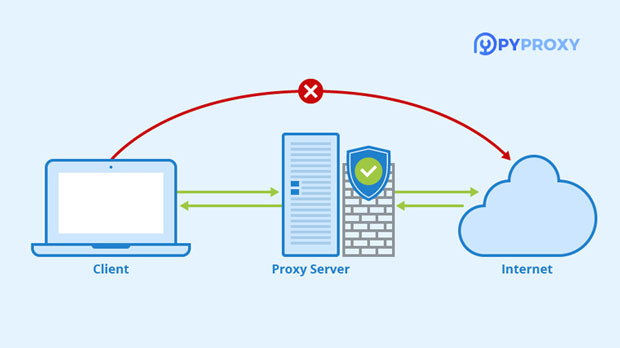When considering proxy services, understanding the protocols supported by a residential backconnect proxy is essential for making the right choice. Residential backconnect proxies offer dynamic IP addresses sourced from real residential networks, which enhances privacy and reduces the risk of being blocked. However, before integrating such proxies into your network or business infrastructure, it is critical to know whether they support HTTPS and SOCKS protocols. In this article, we will explore what residential backconnect proxies are, delve into whether they support HTTPS and SOCKS protocols, and explain why this matters for businesses and individuals who rely on secure, anonymous browsing. What is a Residential Backconnect Proxy?A residential backconnect proxy is a type of proxy service that routes internet traffic through real residential IP addresses, rather than through data center IPs. These proxies are often used to avoid detection and restrictions imposed on traditional proxies. Since residential IPs are linked to actual households, they appear as regular, everyday users to websites and services. This makes them ideal for activities like web scraping, SEO, account management, or bypassing geographical restrictions.Backconnect proxies are unique in that they automatically rotate the IP addresses from a pool of available residential IPs. This dynamic IP assignment further enhances the anonymity and reliability of the proxy. Residential backconnect proxies allow users to access the internet through a distributed network of real IPs, offering benefits over static data center proxies, which can be flagged or blocked by websites.Understanding HTTPS and SOCKS ProtocolsBefore diving into whether residential backconnect proxies support these protocols, let’s first understand what HTTPS and SOCKS are.- HTTPS (Hypertext Transfer Protocol Secure): HTTPS is an extension of HTTP, the protocol used for browsing the web. The "secure" component refers to the encryption provided by SSL/TLS protocols, which ensure the confidentiality and integrity of data transferred between the client and the server. HTTPS is critical for secure transactions, especially when handling sensitive information such as login credentials, personal data, and payment details.- SOCKS (Socket Secure): SOCKS is a protocol that allows for the exchange of data between a client and a server, bypassing restrictions and firewalls. SOCKS5, the latest version of the protocol, is particularly versatile and can handle various types of traffic, including HTTPS, FTP, and even peer-to-peer data transfer. Unlike HTTPS, which specifically secures web traffic, SOCKS is more of a generalized proxy solution, which can be used for any kind of internet traffic.Does Residential Backconnect Proxy Support HTTPS and SOCKS? A Detailed AnalysisNow that we have an understanding of residential backconnect proxies and the two key protocols, let's explore whether these proxies support HTTPS and SOCKS. 1. Residential Backconnect Proxy and HTTPSResidential backconnect proxies often support HTTPS, primarily because of the growing need for secure browsing and data encryption. Most residential proxies are designed to work with secure websites, as they are used to bypass geo-restrictions, manage multiple accounts, or scrape content from websites without triggering blocks. The nature of HTTPS requires encrypted communication between the client and the server. Residential backconnect proxies are capable of supporting HTTPS because they function as a relay between the client and the server, enabling secure transactions. When you use a residential backconnect proxy to access an HTTPS website, the connection remains secure, as the proxy forwards the encrypted traffic to the destination.However, it’s important to note that not all residential proxies are created equal. Some might limit the HTTPS connections due to restrictions placed by the service provider. It's essential to ensure that the residential proxy service you choose offers HTTPS support if your tasks require secure, encrypted browsing. 2. Residential Backconnect Proxy and SOCKSResidential backconnect proxies can also support SOCKS, particularly SOCKS5, which is highly adaptable and can handle all kinds of internet traffic. SOCKS5 offers a high degree of anonymity and privacy by routing traffic through the proxy server without revealing the original IP address. It also allows users to access content that may be restricted by firewalls, especially when using protocols that are not HTTP/HTTPS-based.The ability of a residential proxy to support SOCKS is beneficial for users who need more flexibility in their proxy usage. For example, users might prefer SOCKS5 for activities such as torrenting, gaming, or accessing services that do not rely on HTTP/HTTPS protocols. While HTTPS ensures the security of web browsing, SOCKS5 provides a broader range of protocol support and can be used for various applications beyond web traffic. If your residential backconnect proxy provider supports SOCKS5, it opens up a world of possibilities for managing diverse types of online activities securely.Why Does Protocol Support Matter for Users and Businesses?The protocols supported by residential backconnect proxies can have a significant impact on your overall experience and success with the service. Let’s examine the importance of HTTPS and SOCKS support. 1. Security and Data ProtectionFor businesses or individuals who need to handle sensitive information online, HTTPS support is crucial. Whether it's conducting financial transactions, logging into secure accounts, or managing confidential data, HTTPS ensures that all communications are encrypted, keeping data safe from eavesdropping and tampering. Using a proxy that supports HTTPS ensures that your secure communications remain protected, even when routed through an intermediary server. 2. Flexibility and VersatilitySOCKS support, particularly SOCKS5, is highly valuable for users who need more than just web browsing capabilities. The flexibility of SOCKS allows it to support a wider variety of internet traffic, including peer-to-peer (P2P) protocols, FTP, and other non-HTTP-based services. If your business or personal needs extend beyond browsing websites, the ability to route different types of data securely is a significant advantage.For example, digital marketers, data analysts, or researchers who perform activities like web scraping, SEO testing, or accessing geo-blocked content can benefit from the versatility of SOCKS5. It allows for greater customization in terms of the types of connections and the level of anonymity required. 3. Avoiding IP Blocks and RestrictionsOne of the primary reasons businesses use residential backconnect proxies is to avoid IP blocks and restrictions imposed by websites. Residential IPs are less likely to be flagged as suspicious because they originate from real users. However, if your activities involve high volumes of traffic, the protocol used can make a difference. HTTPS ensures that secure traffic is routed without interruptions, while SOCKS can help route traffic that isn't strictly web-based, such as torrents or P2P connections, reducing the risk of being detected or blocked.Conclusion: Choosing the Right Residential Backconnect ProxyWhen selecting a residential backconnect proxy, it’s essential to assess whether it supports HTTPS and SOCKS protocols. HTTPS is crucial for secure web browsing, while SOCKS offers greater versatility and anonymity for various internet activities. Depending on your specific needs, choosing a proxy service that supports both protocols can provide you with the flexibility and security required to conduct business or enjoy online activities with minimal risks. Always ensure that the proxy provider you choose offers the necessary protocol support for your use case to avoid any limitations or interruptions in service.
Oct 09, 2025



































































